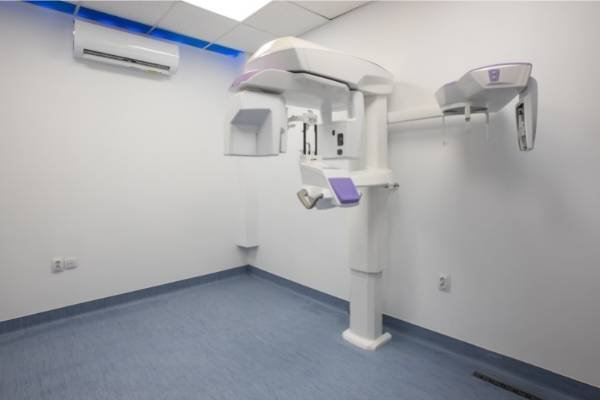The 3D scanner captures data by projecting light sources onto the object such as teeth, dental arches, and implant and converts them into a 3D digital file also known as CAD files (Computer-Aided Design). The digital output obtained is then used by the lab technician to produce customized parts as per the request of a dental surgeon or the patient with the help of Additive Manufacturing technologies (AM technologies).

3D scanners are very quick and precise, they can capture multiple images in no time and then merge them to form a complete 3D digital model.
To elaborate further on its advantages:
- It can produce a customized design with excellent aesthetics and dimensional accuracy.
- Helps to educate the patient with 3D models.
- Treatment planning can be simplified and makes it more effective.
- It can scan complex objects with safety and patient comfort.
- Due to accuracy treatment success rate is higher.
- Last but not the least, it is a cost-effective process.
Usage of 3D Scanning in Dentistry:
Designing Dentures, Bridges, and Implants: The major application of dental scanners is the designing of prosthetic appliances. 3D scanners can generate accurate digital data to create a model of a patient’s mouth which is then used to create dental devices.
For a single crown or a complete set of dentures the data generated would be extremely accurate which can replicate the original dimensions and gives the patient the best fit model of teeth, ceramic crowns, or maxillofacial prosthesis. For dental implant, it can be used to construct surgical guides which can guide the surgeon during implant surgery with precise location about where to put the drill, which not only can save time but can also provide a successful treatment.
Restore old parts or devices (When no CAD data is available): Scanned model shows where the various corrections are required then using the data the dentist can make changes that are needed for better alignment and accuracy.
Designing of oral healthcare items: Oral healthcare items such as toothbrushes or flossing devices can be manufactured or customized as per the number of teeth and patient’s mouth shape to assure good fit and comfort of the patient. This usage has come up as the latest benefit that has shown a spark in the pharmaceutical market.
Upgrades tools and equipment: In dentistry, it is very important to keep upgrading and modifying tools for a better result. This technology can also help to design and upgrade tools and various types of equipment.
Surgical Planning: For complicated cases such as placement of prosthetic appliances and some implant surgeries it is very important to have an accurate pre-surgical review so that the surgeon can predict any problem before surgery and can perform the procedure more successfully and in less time. Thus a 3D model can be used for surgical planning to reduce operation time and surgical risks.
Education and Training: Compared to simple 2D pictures when a 3D model is used for training or education purposes, it can help the students and practicing dental surgeons to better understand the internal and external anatomy of the head and neck region. They can also be used to educate the patient about the treatment plan before any procedure.
Storage and Upgrading of Patient Data: It enables a dental practice to successfully store a patient’s data in an easily accessible format which can be used anytime in the future for up-gradation with a quick retrieval.
Future Scope of 3D Scanning
With a list of innovative applications digitization in dentistry would prove to be beneficial for both,] dentist and the patient. The quality of work in terms of precision is far beyond the conventional format and the time consumed to generate such precise pieces of work is negligible.
It almost nullifies the chances of variation in dimensions of a patient’s data, especially when it is used between two dentists for the same procedure or the rectification of any old prosthesis. It can modify the pattern of education to the next level where visualization holds the utmost advanced level. Last but not least the cost of this amazing technology with huge benefits is very much friendly on the patient’s pocket.
Thus to summarize it all the above-mentioned facts are sufficient enough to state that the future of dentistry is digitalization and it is indeed very bright!
About us and this blog
We are a Dental Teleradiology service provider offering online interpretation and reporting of dental radiology studies like OPG, Cone Beam CT (CBCT), Dental X Ray, Sialography etc.
Request a free quote
Please let us know about your reporting requirements so that we can send you our service proposal customized to your needs.
Subscribe to our newsletter!
More from our blog
See all postsRecent Posts
- Importance of Oral and Maxillofacial Radiology in Dentistry July 1, 2021
- Dental 3D Scanning – A New Age Revolution June 30, 2021
- Looking After Your Oral Health in Festival Season June 16, 2021







